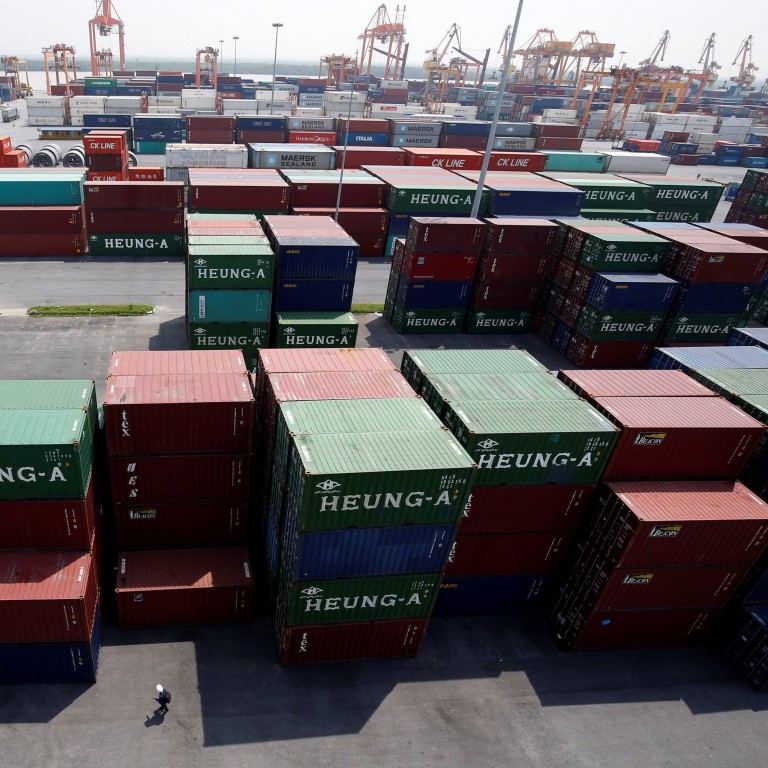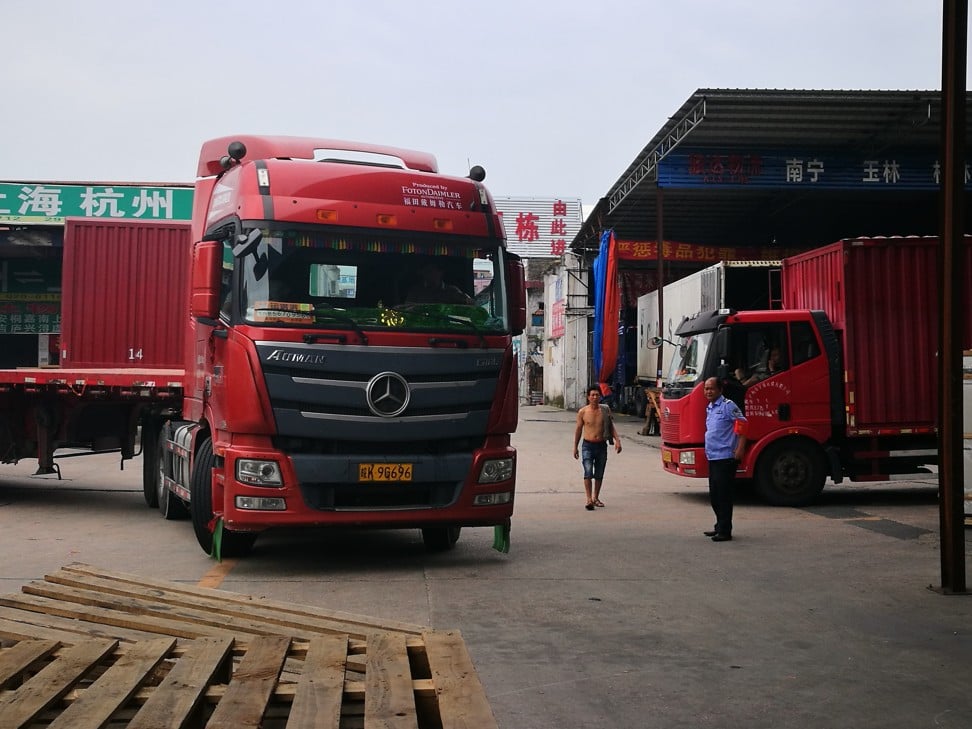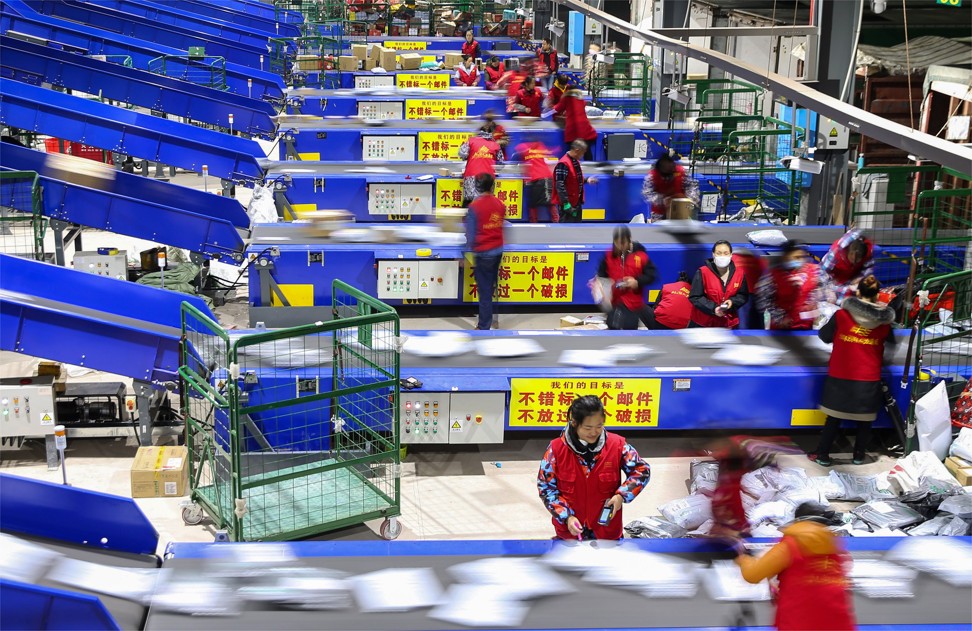
US-China trade war manufacturing exodus creating boom times for Chinese logistics companies
- The trade war has created an unlikely winner: the cross-border logistics companies facilitating the exodus of Chinese manufacturers
- Guangzhou-based R&T Transportation helped 10 firms move their entire plant out of China since 2018 and 500 companies to move part of production
The US-China trade war has created an unlikely winner: the Chinese logistics companies facilitating the exodus of manufacturers looking to dodge tariffs.
The supply chain shift has been claimed as a victory by US President Donald Trump, who tweeted: “Many tariffed companies will be leaving China for Vietnam and other such countries in Asia.”
This prompted a rebuke from the Chinese Foreign Ministry on Tuesday, which denied that manufacturers were leaving China in their droves.

But the tariffs have accelerated the trend, and logistics companies with cross-border capability are milking the opportunities, moving the growing traffic of Chinese firms from China’s industrial heartlands and newly-built industrial parks in neighbouring countries.
“Since the second half of 2018, our company has helped 10 manufacturers – in sectors from jewellery, to electronics, to printing – relocate their entire plant. That is to say, these 10 enterprises have completely shifted and withdrawn from China,” said Eric Huang, who runs one of the leading logistics companies in Guangzhou, R&T Transportation.
“We have also helped at least 500 companies to transport their partial production lines, as well as raw materials and equipment, to their newly-built plants in Vietnam, Indonesia and Thailand,” he said.
This was followed three days later by the publishing of a new list of goods to be subject to a 25 per cent tariff, containing almost all the remaining Chinese exports to the United States, worth an estimated US$300 billion. Many manufacturers were caught by surprise and left scrambling to get out of China, said Hsu Yu-lin, chairman of the Taiwanese Chamber of Commerce in Vietnam.
“There are a lot of companies moving to Taiwan or to Vietnam urgently because they were not psychologically prepared for the worsening trade war. The situation in the last two weeks has turned sharply. Many Taiwanese manufacturers I know were not prepared for such a big change. They had a happy-go-lucky attitude and did not believe it would get so serious,” Hsu said.
Hsu added that those companies that can “operate cross-border logistics, handle large-scale manufacturing equipment and manage customs clearance” are reaping the benefit.
Before the sudden cooling in US-China relations those companies that had already made the move out of China “thought their judgement was wrong, and complained that the cost of relocation was too high. Now they are just glad, as it is becoming harder and more expensive to move,” Hsu said.
Huang at R&T Transportation said that he has noticed another striking trend over the past year: the production facilities being built in Southeast Asian countries are sometimes larger than the factories being left behind in China.
“The size of the factory buildings and the number of workers there are usually the same or even larger than in their previous factories in China. We can see local ambitions to take on Chinese production capacity [elsewhere in Asia]. Those industrial parks are newly-built and [already] under expansion. They are all focusing on the relocation of manufacturing from China.” Huang said.

Lim Kian Peng is the deputy general manager at Overland Total Logistics (OTL), a Guangxi-based company that has helped 300 manufacturers transporT partial production lines, as well as raw materials and equipment, to their newly-built plants in Southeast Asia. Among them are makers of photovoltaic solar panels, electronic goods and moulds.
Often, smaller firms are following their customers – bigger manufacturers – into Vietnam, Lim said. In supply chain terms, “clustering” commonly sees ecosystems of suppliers spring up around the main buyers, which in this case are leaving China at an accelerating rate. Now, the movement of components, raw materials, semi-finished and finished products between China and Southeast Asia accounts for about 80 per cent of OTL’s business.
OTL's current capacity includes up to 500 45-foot trucks with more than 1,000 drivers, offering door to door logistics for forwarding, transportation, cargo handling and warehousing for Chinese manufacturing companies and their newly-built factories in six countries in southern Asia: Singapore, Thailand, Vietnam, Malaysia, Laos, and Cambodia. “The main customers of OTL last year were Chinese manufacturing companies in the fields of hi-tech precision electronics, clothing and footwear, photovoltaic panels, mobile screens, and so on.” he said.
The trend, which has been underway for a number of years, is becoming increasingly efficient, with the transiting of raw materials and components from Chinese factories to their counterparts in Southeast Asia happening more and more swiftly.
“If the goods are dispatched at 6pm on a Monday from Dongguan, they can arrive at the border of China and Vietnam at 9am on Tuesday, at the industrial park in northern Vietnam at 10pm the same evening, at the industrial park in Bangkok on Thursday, and in Northern Malaysia on Friday,” said Lim, who expects this cross-border business to grow by at least 20 per cent annually over the next few years.
Even if the trade war were to end tomorrow, the logistics companies do not expect this trend to grind to a halt.
“We started logistics business between China and Southeast Asian countries in 2011, with about 30 million yuan (US$4.34 million) of annual turnover at the time. Our turnover was 150 million yuan in 2018. Though no one knows the final outcome of the trade war, the relocation trend is sure to increase. It is quite possible that the business will double to 300 million yuan this year,” Huang said.
Meanwhile, those companies who have yet to make the move are losing out to competitors who may have stolen a march on them, said Hsu at the Taiwanese Chamber of Commerce. “Due to the 25 per cent tariffs in the furniture industry, for example, opening Vietnam-based factories has become a top priority for most international buyers. Your competitor has already relocated, and you have to spend at least one or two years to move, which has become a very serious problem for those companies that took a ‘wait and see attitude’,” Hsu said.

